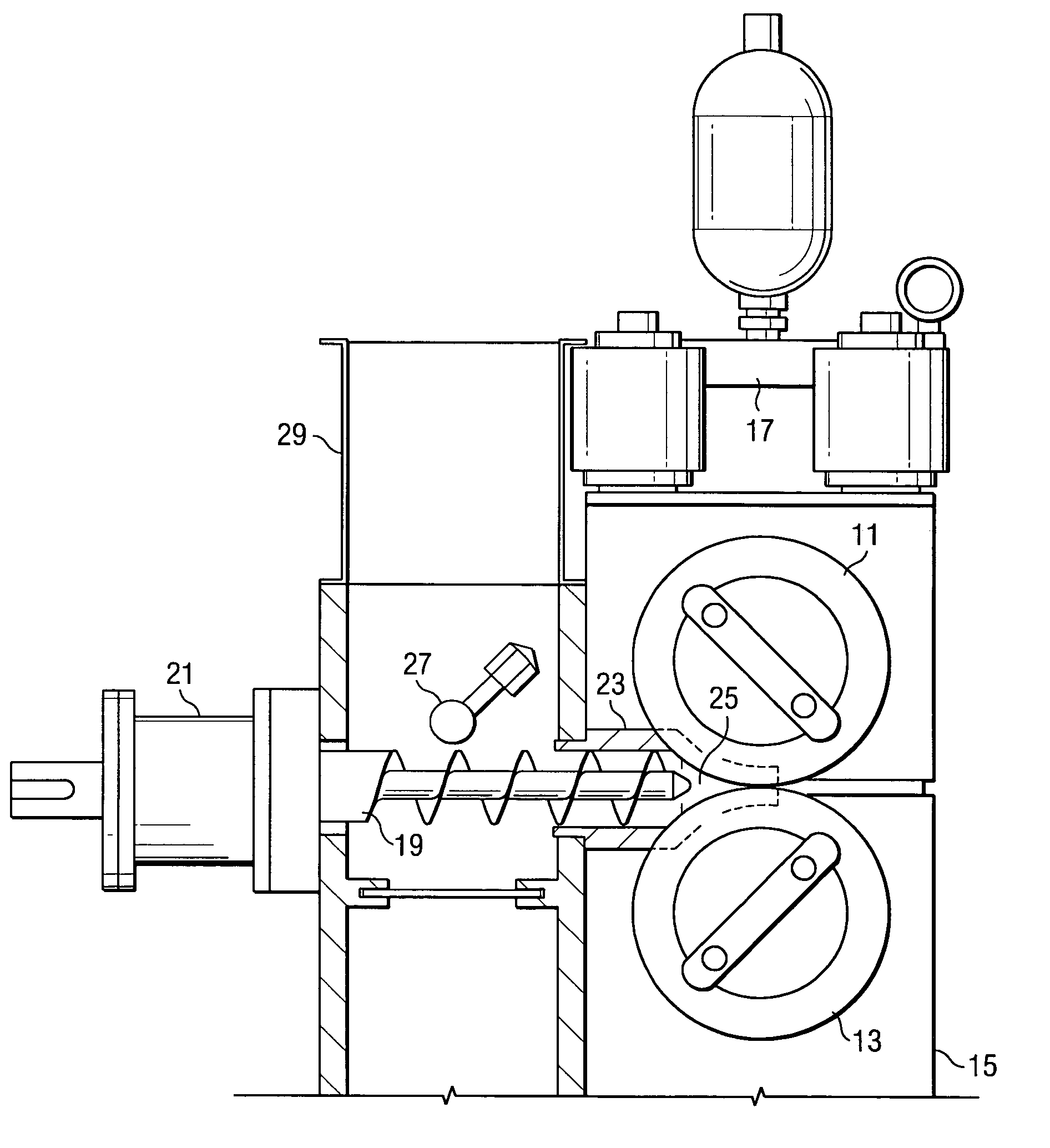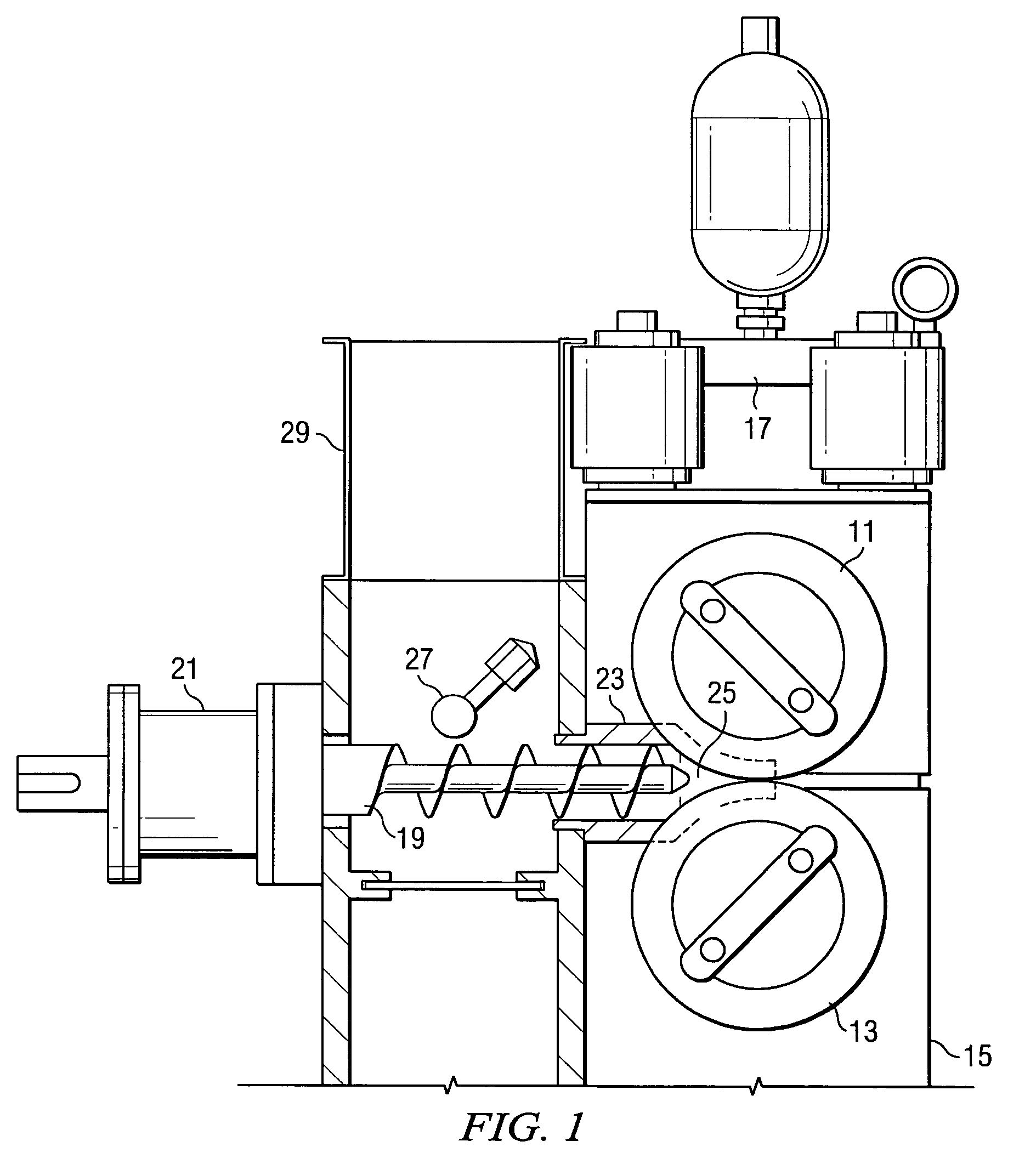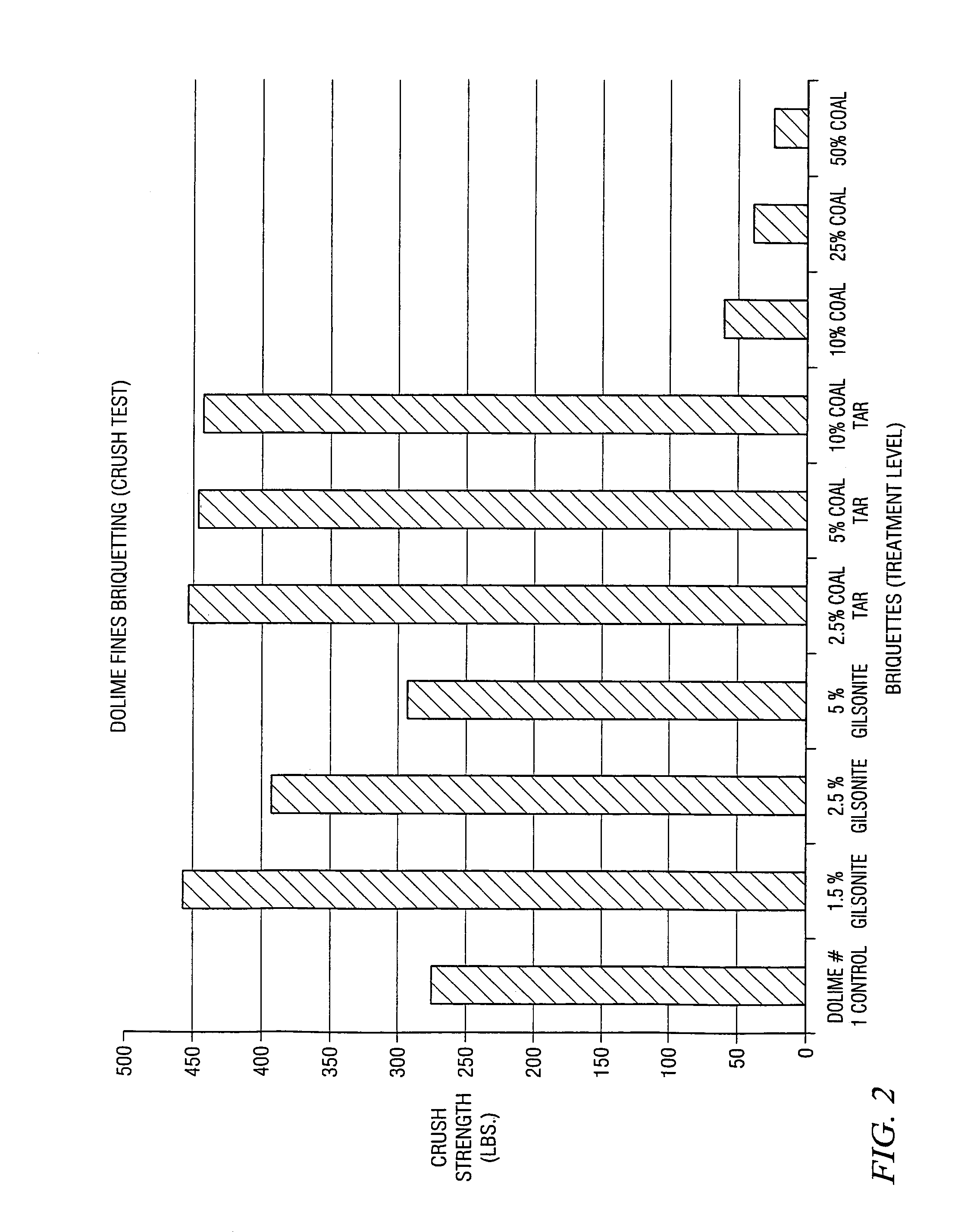Briquetting of lime based products with carbon based additives
a technology of carbon based additives and lime based products, which is applied in the field of lime based products with carbon based additives, can solve the problems of significant increase in reduced briquettes, and reduced briquettes. , to achieve the effect of reducing the temperature of the slurry, and reducing the slurry temperatur
- Summary
- Abstract
- Description
- Claims
- Application Information
AI Technical Summary
Benefits of technology
Problems solved by technology
Method used
Image
Examples
Embodiment Construction
[0020]While the invention may be utilized in a variety of industrial settings, the preferred embodiment thereof will be described with respect to briquettes which are utilized in the steel industry, for example, in an Electric Arc Furnace process. In the production of certain grades of steel in this country, an Electric Arc Furnace (EAF) is used. The EAF process will be familiar to those skilled in the art. In a typical operation, solid charge ingredients including raw scrap, limestone, burnt lime, iron ore and ferro alloy additives are charged to a furnace. Furnaces in common use include the so-called “top charge” units. Such furnaces are equipped with a roof swing which permits the roof to swing aside when cold scrap is charged; a rocker / rail tilting arrangement which allows the furnace to tilt forward for tapping and backward for slagging; means for supplying additions through the furnace roof; and evacuation means for removing dust generated during the steel making procedure.
[00...
PUM
| Property | Measurement | Unit |
|---|---|---|
| height | aaaaa | aaaaa |
| density | aaaaa | aaaaa |
| density | aaaaa | aaaaa |
Abstract
Description
Claims
Application Information
 Login to View More
Login to View More - R&D
- Intellectual Property
- Life Sciences
- Materials
- Tech Scout
- Unparalleled Data Quality
- Higher Quality Content
- 60% Fewer Hallucinations
Browse by: Latest US Patents, China's latest patents, Technical Efficacy Thesaurus, Application Domain, Technology Topic, Popular Technical Reports.
© 2025 PatSnap. All rights reserved.Legal|Privacy policy|Modern Slavery Act Transparency Statement|Sitemap|About US| Contact US: help@patsnap.com



